Bow And Drilling Apparatus Item Number: E7432-0 from the National Museum of Natural History
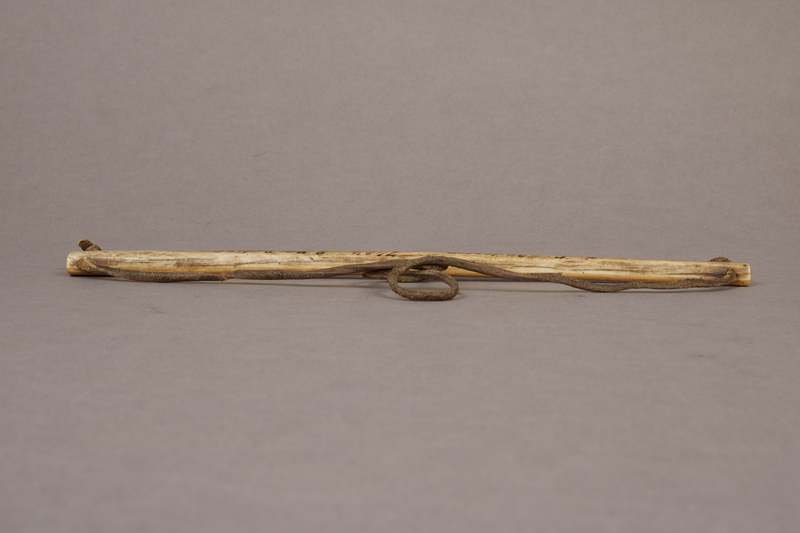
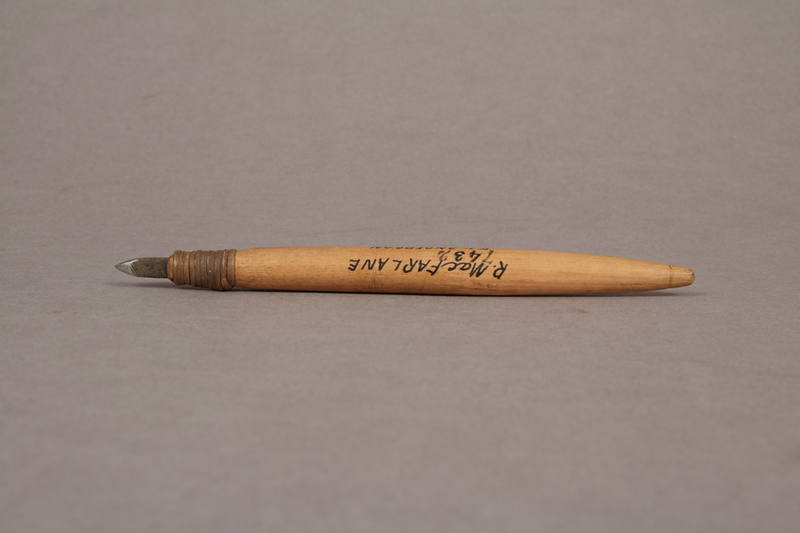
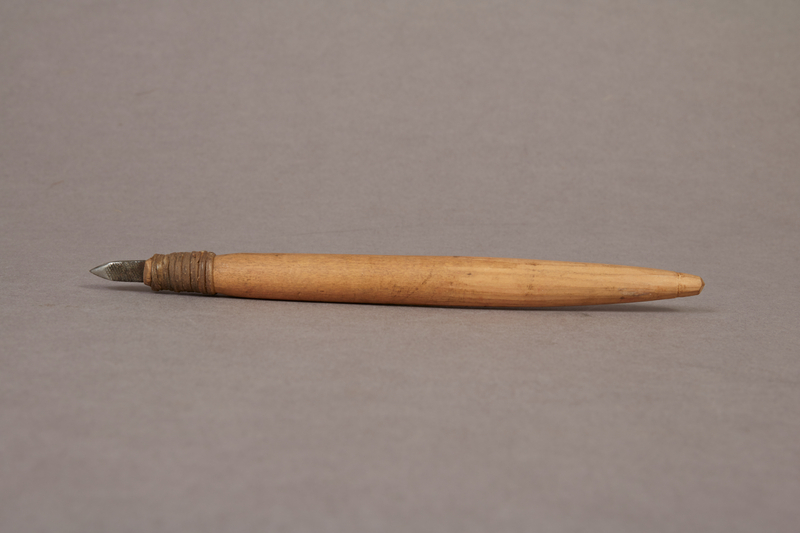
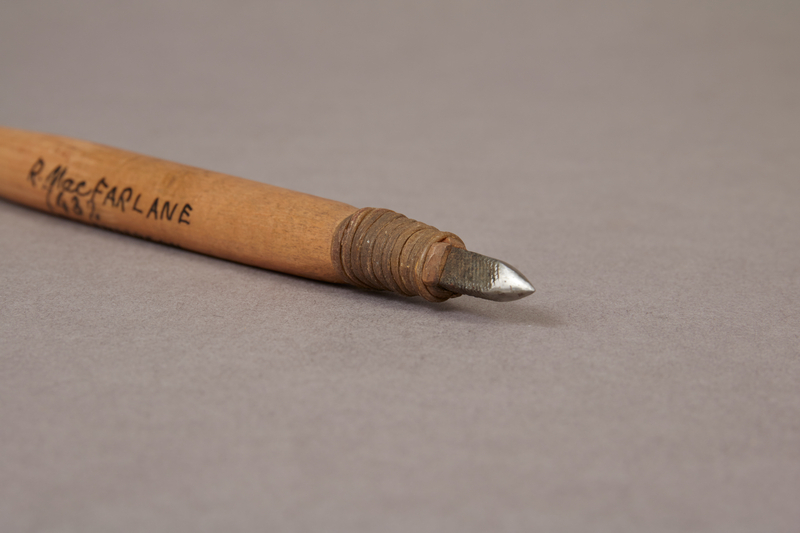
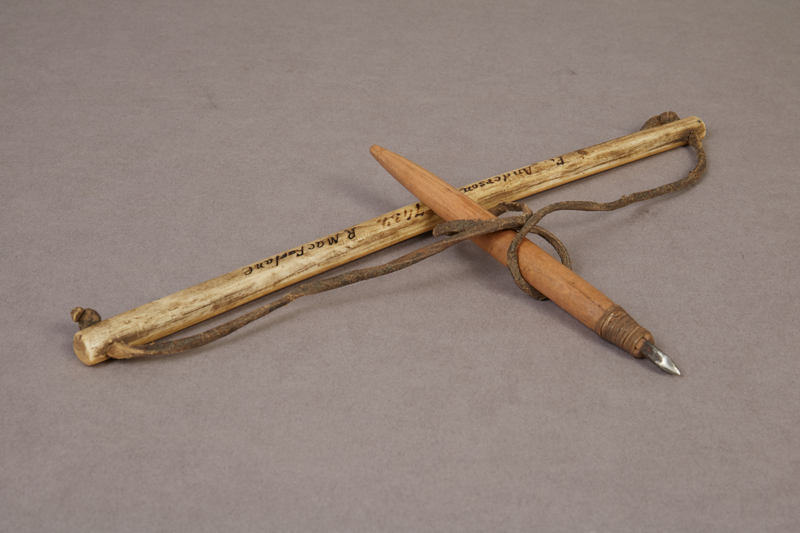
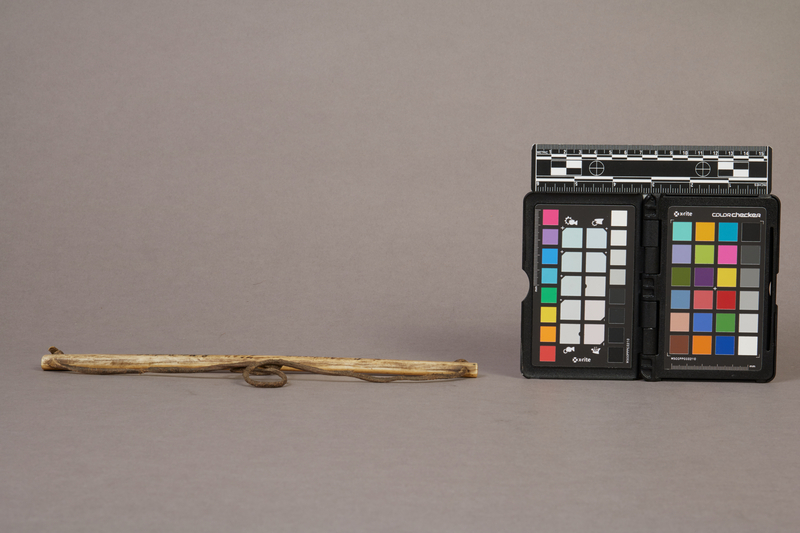
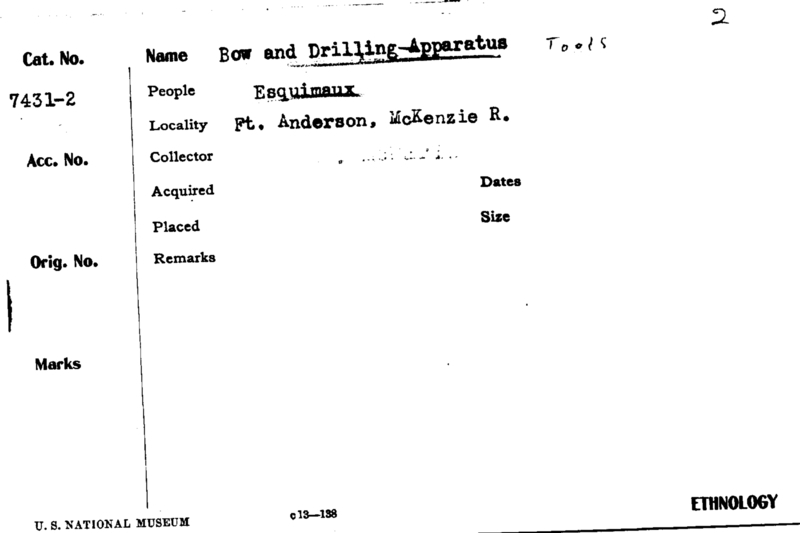

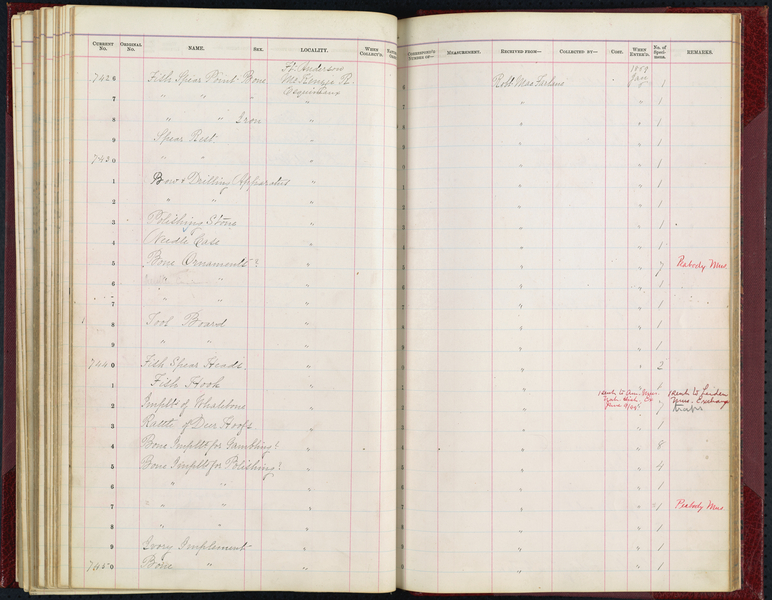
Notes
Source of the information below: Inuvialuit Pitqusiit Inuuniarutait: Inuvialuit Living History, The MacFarlane Collection website, by the Inuvialuit Cultural Resource Centre (ICRC), Inuvik, N.W.T., Canada (website credits here http://www.inuvialuitlivinghistory.ca/posts/12 ), entry on this artifact http://www.inuvialuitlivinghistory.ca/items/83 , retrieved 1-27-2020: Bow and spindle for a bow drill. The bow is a slightly curved ivory rod with a hole drilled at either end. One end of a hide thong passes through each hole and is knotted to hold it in place. The spindle has a cylindrical wooden shaft that tapers at each end. The end of the shaft that was inserted into a bearing is slightly trimmed. A tip made from a reworked file has been inserted into a slot at the other end, and is held in place with a hide thong wrapped around the spindle shaft. More information here: http://www.inuvialuitlivinghistory.ca/item_types/20: The bow drills in the MacFarlane Collection were used for boring holes into wood, antler, bone and ivory. The drill spindle (shaft) has a bit at one end, and the other end is shaped to fit into a bearing that is held between the teeth. The spindle is rotated by wrapping a slack thong attached at each end of a drill bow around it, and moving the bow back and forth. Ancestral Inuvialuit also used another type of bow drill for starting fires.
Item History
- Made in Northwest Territories, Canada
- Collected in Northwest Territories, Canada
- Received from Roderick R. MacFarlane on January 7, 1869
Who
- Culture
- Eskimo, Inuit and Inuvialuk
- Received from
- Roderick R. MacFarlane
Where
- Holding Institution
- National Museum of Natural History
- Made in
- Northwest Territories, Canada
- Collected in
- Northwest Territories, Canada
When
- Acquisition Date
- on January 7, 1869
Other
- Accession Number
- 69A00012